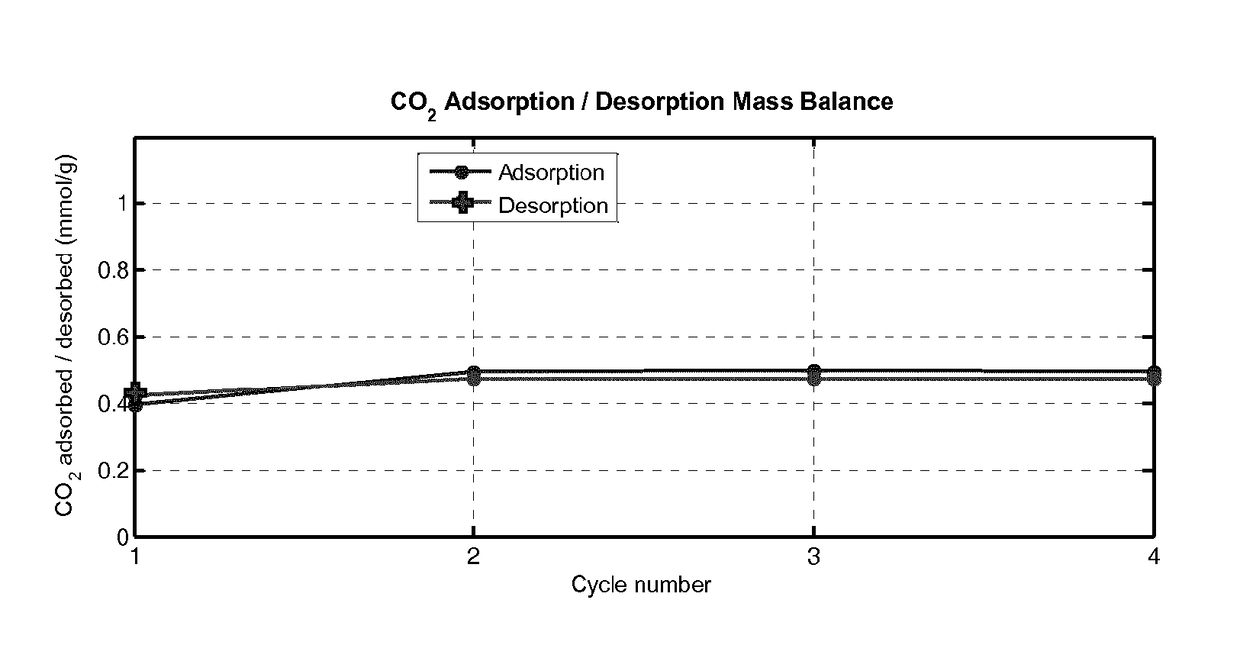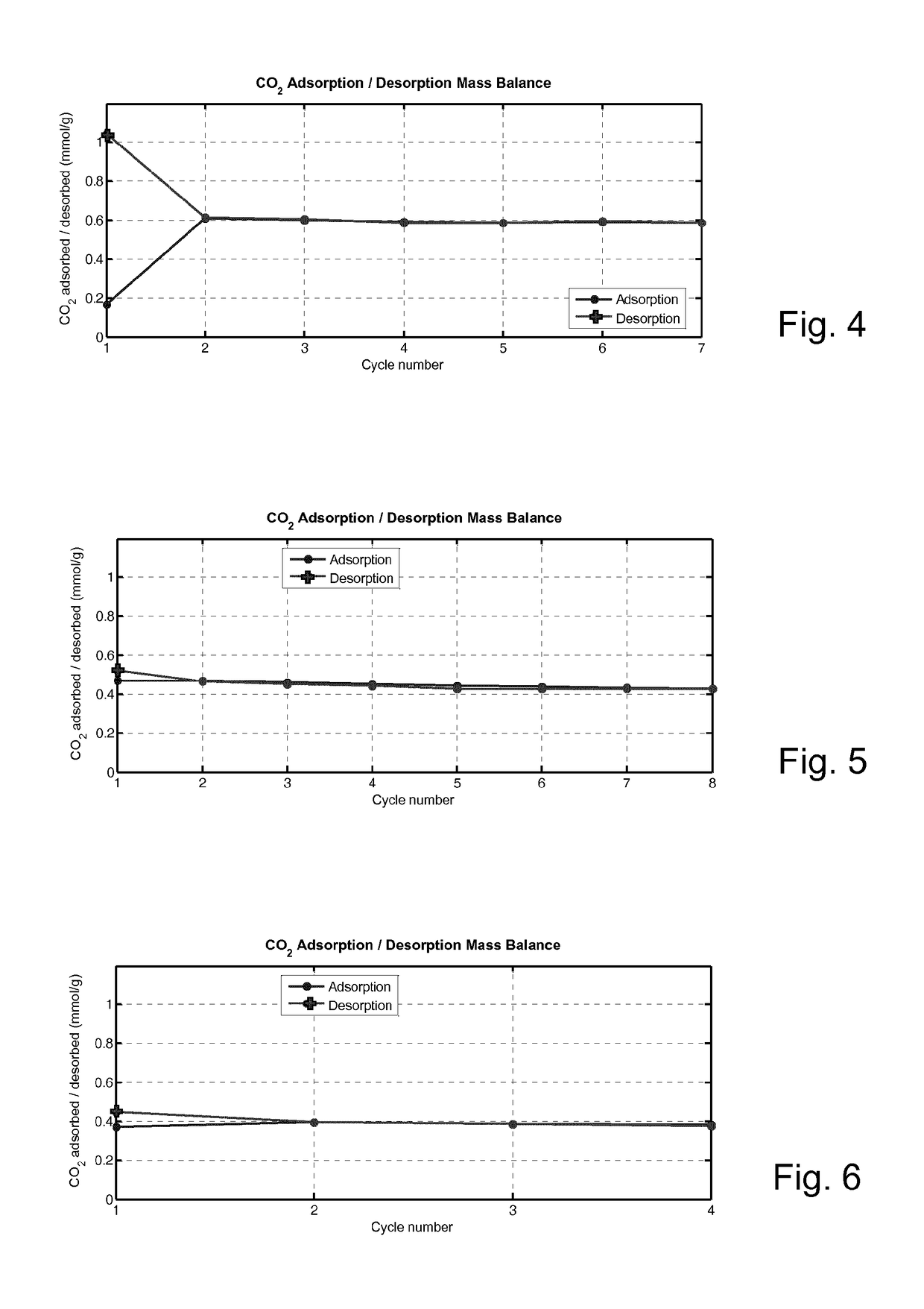Porous Adsorbent Structure for Adsorption of CO2 from a Gas Mixture
a gas mixture and porous adsorbent technology, applied in the direction of weaving, other chemical processes, separation processes, etc., can solve the problem that films are not suitable for co2
- Summary
- Abstract
- Description
- Claims
- Application Information
AI Technical Summary
Benefits of technology
Problems solved by technology
Method used
Image
Examples
Embodiment Construction
1. Isolation of Cellulose Nanofibers
[0084]1.2 kg refined fibrous beech wood pulp suspension having a dry material content of 13.5% w / w (Arbocel P10111 obtained from Rettenmeier & Söhne GmbH & Co. KG, Germany) was placed in a 10 liter thermostatic glass reactor kept at 15° C. and diluted with 8.8 kg of deionized water. The starting material is considered as a mixture of cellulose nanofibers and large cellulose fibers. The resulting suspension was stirred at 148 rpm for 21 h to allow swelling, Thereafter the suspension was homogenized for 170 min through an inline Ultra-Turrax system (Megatron MT 3000, Kinematica AG, Switzerland) at 15′000 rpm, which was connected to the glass reactor, The homogenized suspension was subjected to high shearing-stress generated through a high-shear homogenizer (Microfluidizer Type M-110Y, Microfluidics Corporation, USA). Thereby the suspension was pumped for 10 passes through a sequence of 400 μm and 200 pm interaction chambers and subsequently for 5 pa...
PUM
| Property | Measurement | Unit |
|---|---|---|
| length | aaaaa | aaaaa |
| diameter | aaaaa | aaaaa |
| porosity | aaaaa | aaaaa |
Abstract
Description
Claims
Application Information
 Login to View More
Login to View More - R&D
- Intellectual Property
- Life Sciences
- Materials
- Tech Scout
- Unparalleled Data Quality
- Higher Quality Content
- 60% Fewer Hallucinations
Browse by: Latest US Patents, China's latest patents, Technical Efficacy Thesaurus, Application Domain, Technology Topic, Popular Technical Reports.
© 2025 PatSnap. All rights reserved.Legal|Privacy policy|Modern Slavery Act Transparency Statement|Sitemap|About US| Contact US: help@patsnap.com



